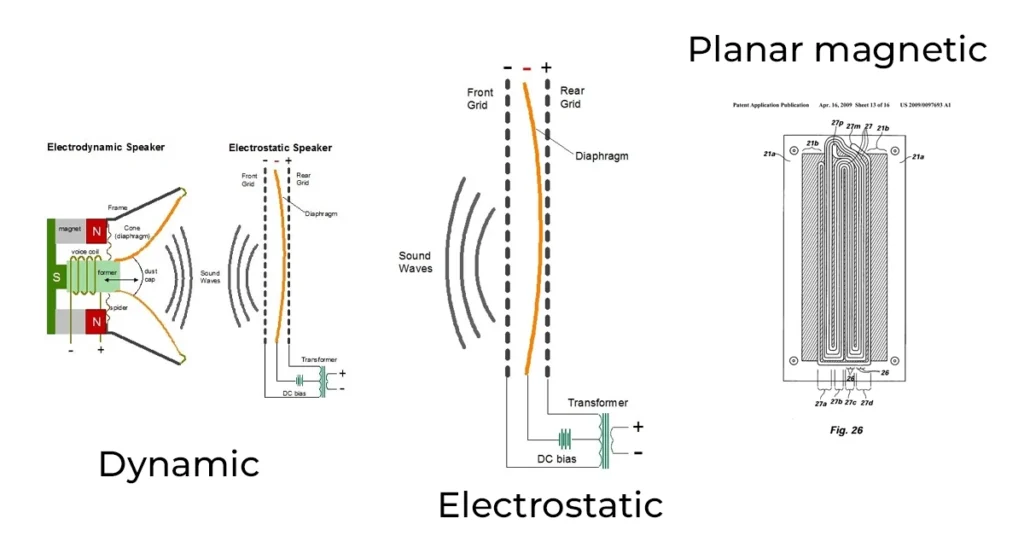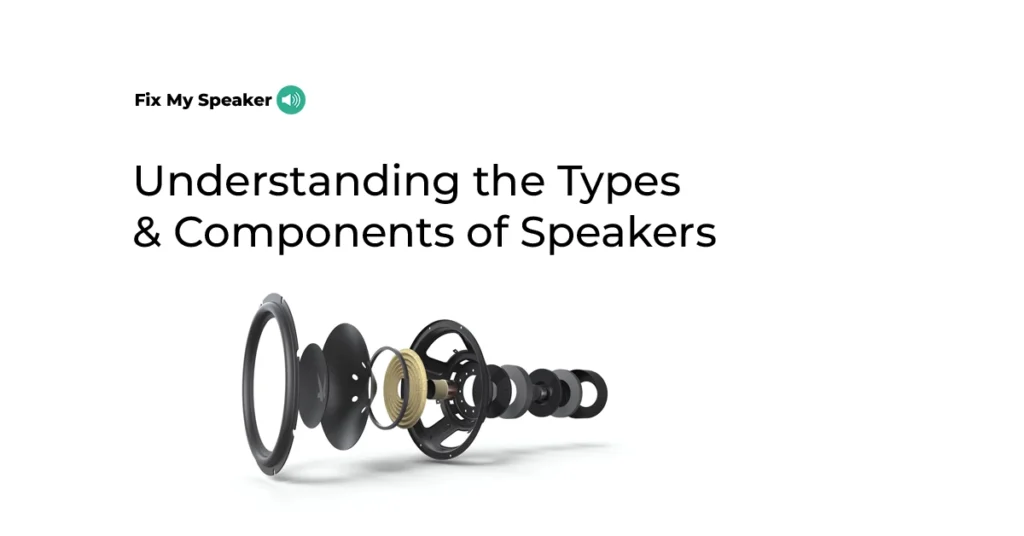Speakers are electronic devices that convert electrical signals into sound waves. They are essential components in audio systems, ranging from small portable devices to large concert setups. This article explores the fundamental principles of speaker operation, their anatomy, and how they produce sound.
Having Problems with your Phone Speaker Sound?
Use Our Online Fix My Speaker Tool to Fix your Phone Speaker without spending a penny.
What are the fundamental principles of speaker operation?
A speaker is a transducer that converts electrical energy into mechanical energy, which then produces sound waves. This process involves several key components working together to create the audio we hear.
There are 3 main types of speakers:
1. Dynamic speakers
2. Electrostatic speakers
3. Planar magnetic speakers
Dynamic speakers are the most common type. They use a magnetic field and an electrical current to move a diaphragm, creating sound waves.
Electrostatic speakers use a thin, electrically charged diaphragm between two conductive plates. They produce sound by moving the diaphragm in response to audio signals.
Planar magnetic speakers employ a flat diaphragm with embedded conductors placed between magnetic arrays. They create sound by moving the diaphragm in response to electrical signals.

What is the anatomy of a speaker?
A typical speaker consists of 5 main components:
| Component | Technical Information | Description |
|---|---|---|
| Diaphragm/Cone | – Materials: Paper, polypropylene, aluminum, titanium, or carbon fiber – Typical size range: 1″ to 15″ diameter – Frequency response: Varies by size and material | The diaphragm is the part that vibrates to create sound waves. Smaller cones handle higher frequencies, while larger ones manage lower frequencies. Material choice affects sound quality and durability. |
| Voice Coil | – Wire material: Copper or aluminum – Typical resistance: 4-8 ohms – Power handling: 10W to 1000W+ | The voice coil is a wire wound around a former, attached to the diaphragm. It carries the audio signal and moves within the magnetic field, driving the diaphragm’s motion. |
| Magnet | – Common types: Ferrite, neodymium, alnico – Magnetic strength: 0.5T to 1.5T (Tesla) – Weight: 50g to 5kg+ depending on size and type | The magnet creates a static magnetic field. It interacts with the voice coil’s varying magnetic field to produce motion. Stronger magnets generally allow for more efficient speakers. |
| Suspension System | – Parts: Spider and surround – Materials: Rubber, foam, or cloth – Compliance: Measured in mm/N | The suspension system allows the diaphragm to move freely while keeping it centered. It affects the speaker’s ability to handle low frequencies and high power. |
| Enclosure | – Types: Sealed, ported, bandpass – Materials: MDF, plywood, plastic – Volume: 0.1L to 100L+ | The enclosure houses all components and shapes the sound output. It can significantly affect bass response and overall sound quality. Different designs suit various applications and sound preferences. |
1. Diaphragm or cone: Electrical signals are sent to the voice coil, typically ranging from millivolts to volts. The current flow is determined by the voice coil’s impedance, usually 4-8 ohms. These signals correspond to the desired audio frequency, typically spanning from 20Hz to 20kHz.
2. Voice coil: The voice coil creates a varying magnetic field as the signal flows through it. This field’s strength changes with current, following Ampère’s law, and can reach several tesla in the gap. The coil’s inductance, typically 0.1-2 mH, affects the speaker’s high-frequency response.
3. Magnet: This varying field interacts with the speaker’s permanent magnet following the Lorentz force law (F = BIL). The force direction changes with current polarity, causing vibration. The interaction between these magnetic fields is the core mechanism that drives the speaker’s operation.
4. Suspension system: The interaction causes the voice coil and attached diaphragm to move. This movement can range from micrometers to millimeters in amplitude, with acceleration reaching hundreds of m/s² at high frequencies. The motion is constrained by the suspension system’s compliance and damping, ensuring controlled and accurate sound reproduction.
5. Enclosure: The diaphragm’s movement creates sound waves in the air, manifesting as pressure variations typically ranging from 20µPa to 20Pa. Wavelengths vary from 17mm at 20kHz to 17m at 20Hz at room temperature. Sound intensity follows the inverse square law, decreasing with distance from the speaker, effectively converting electrical energy into the acoustic energy we perceive as sound.
What role does each component play?
The diaphragm, often called the cone, is responsible for creating sound waves. It’s typically made of lightweight, rigid materials like paper, plastic, or metal.
The voice coil is a wire coil attached to the diaphragm. It carries the electrical audio signal and interacts with the magnet to create movement.
The magnet provides a static magnetic field. It interacts with the varying magnetic field produced by the voice coil to create motion.
The suspension system, including the spider and surround, allows controlled movement of the diaphragm while keeping it centered.
The enclosure houses all components and shapes the sound output. It can significantly affect the speaker’s performance and sound quality.
How is sound produced by a speaker?
Sound production in a speaker involves a series of steps:
1. Electrical signals are sent to the voice coil.
2. The voice coil creates a varying magnetic field.
3. This field interacts with the permanent magnet.
4. The interaction causes the voice coil and attached diaphragm to move.
5. The diaphragm’s movement creates sound waves in the air.
Factors affecting sound quality include:
– Material properties of the diaphragm
– Strength and uniformity of the magnetic field
– Precision of the suspension system
– Design of the enclosure
What influences the quality of sound produced?
Speaker materials play a crucial role in sound quality. For example, aluminum diaphragms offer high rigidity but may produce unwanted resonances.
Design and engineering impact sound reproduction. Proper alignment of components and optimized enclosure design can significantly improve audio quality.
Amplifier quality affects the electrical signal sent to the speaker. High-quality amplifiers provide cleaner signals, resulting in better sound reproduction.
Room acoustics influence how we perceive speaker output. Factors like room size, shape, and furnishings can affect sound reflection and absorption.
How have speakers evolved over time?
Speaker technology has progressed significantly since its inception. Early speakers used large, heavy magnets and simple paper cones.
Modern innovations include:
– Neodymium magnets for stronger magnetic fields
– Advanced materials like carbon fiber for diaphragms
– Digital signal processing for improved sound quality
– Wireless connectivity for convenience
Future trends in speaker technology may include:
– Integration with smart home systems
– Improved energy efficiency
– Enhanced directional sound capabilities
– Advanced materials for better performance
Understanding these basics of speaker functionality can help consumers make informed decisions when choosing audio equipment and appreciate the complexity behind the sound we enjoy every day.


